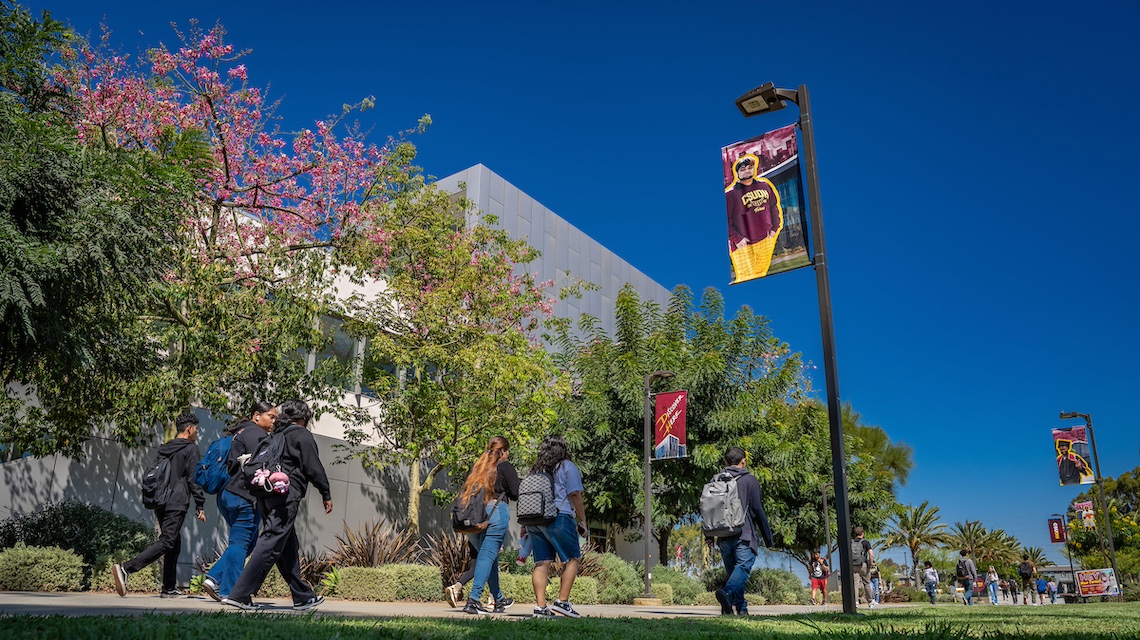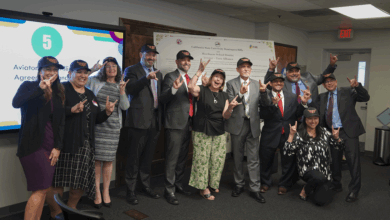
Source: U.S. News & World Report
As the Hispanic population has grown in the U.S. in recent decades, with it has come the emergence of Hispanic Serving Institutions.
Hispanic Serving Institutions – HSIs – are colleges and universities where Hispanic students make up at least 25% of the full-time equivalent student body, according to the U.S. Department of Education. Hispanic Serving Institutions must be certified as such by the Department of Education.
Certification gives schools eligibility to compete for grants earmarked for HSIs. These funds also enable colleges to continue to recruit Hispanic students and to support them on campus, guiding students to graduation day and setting alumni up for employment afterward, experts say.
HSIs also offer “an understanding of the culture and an understanding of the student population that we service,” says Maggie Hinojosa, senior vice president for strategic enrollment and student affairs at The University of Texas—Rio Grande Valley.
“We know what our students and our families, in many instances, go through in their personal lives and the types of barriers that they potentially have faced,” she says.
In some ways, HSIs are similar to historically Black colleges and universities, with a track record of enrolling minority populations that often have been underserved at predominantly white institutions. However, unlike HBCUs, which were founded specifically for Black students amid segregation, many HSIs have simply experienced significant growth in Hispanic enrollment at colleges where they once made up a smaller percentage of the student body.
How Many Hispanic Serving Institutions Are There?
The Hispanic Association of Colleges and Universities, known as HACU, recognizes 600 nonprofit Hispanic Serving Institutions, including schools in Puerto Rico and community colleges. The Department of Education, by contrast, recognizes 544. HACU’s numbers include emerging HSIs not yet certified.
“Usually the federal government is lagging behind our numbers, because they only list the certified institutions, not the ones that we might have already identified, but not yet certified,” says Antonio Flores, HACU president and CEO.
The number of Hispanic Serving Institutions means there are options for undergraduates in most states. Some states, such as California and Texas, have more HSIs while others have relatively few. Some states have no full-fledged HSIs but do have institutions that are approaching the designation, per the HACU website.
Why Students Should Consider HSIs
One considerable benefit for Hispanic students attending an HSI is a sense of belonging, experts say. Some HSIs are comprised of 62% or more Hispanic students, and in many cases a good portion of the faculty and staff at these schools are also Hispanic.
An environment where a sizable portion of the student body and faculty “look like you” can help students feel more comfortable, says Bobbie Porter, vice president and chief diversity, equity and inclusion officer at California State University—Dominguez Hills. This can be especially valuable for first-generation college students, she says.
“We know a sense of belonging helps students persist, come back every year, continue to sit through these challenging classes and to learn what it takes to be successful in school,” she says, adding that nearly half of the school’s workforce is Hispanic. “It’s directly connected to their sense of belonging and connection on campus.”
Students should research which schools meet their specific academic and personal needs, experts say. Because there’s no federal mandate to direct HSIs how to operate, each school looks different in terms of its makeup, services and supports.
“There continues to be a wide variety of experiences at Hispanic Serving Institutions,” says Cyndia Morales Muniz, senior director of Hispanic Serving Institution Initiatives at the University of Central Florida. “The goal is always that all students – including our Hispanic and Latino students – feel seen, valued and that we are helping them lean into their cultural assets that promote success academically and as far as their careers are concerned.”
For example, UCF is one of more than 20 schools participating in the Grow with Google HSI Career Readiness Program, a partnership with HACU that gives HSIs a grant to launch an evidence-based digital skills curriculum “to help Latino students build their careers and increase their economic potential,” according to the HACU website.
CSU—Dominguez Hills, like many HSIs, offers cultural resource centers for various minority groups, including a robust one for Hispanic students, its largest student population, Porter says.
“Just having a space where they can find folks who share their lived and cultural experiences is a big part of what’s important to us as an HSI,” she says. “At the end of the day, we know it does help them persist to graduation.”
Many HSIs also focus on reducing financial barriers to college. For example, tuition and fees for UT—Rio Grande Valley students are locked in during freshman year and don’t increase for four years. The school also caps its cost at 12 credit hours, meaning any hours taken above that are free. This equates to about one semester of free tuition, says Guy Bailey, the school’s president.
This helps incentivize students to graduate early or on time, he says, adding that the school’s graduation rates have increased by 10 percentage points over the last several years.
“The longer it takes you to graduate, the less likely you are to graduate,” Bailey says. “The longer it takes you to graduate, the longer you’re out of the workforce. In many cases, our kids need to help their families and get into the workforce in a timely manner.”
Additionally, full-time students and Texas residents in good academic standing who come from families with an annual income of $125,000 or less pay no tuition or mandatory fees, Bailey says. He estimates that 90% of the school’s full-time undergraduate student body pays no tuition or mandatory fees.
When checking out HSIs, students should also consider mentorship and internship opportunities and campus resources to guide them to graduation, experts say.
At Marymount University in Virginia, president Irma Becerra sees an opportunity to place graduates in areas where Hispanics are underrepresented, such as the health fields and careers in science, technology, engineering and math, commonly known as STEM. The school’s engineering program includes 40% Hispanic students and 40% women, she says.
Marymount also received a $2 million grant from the Health Resources and Services Administration that funded 84 fellowships for clinical mental health counseling students.
“The reason we were able to attract this is because there’s a huge need to have Hispanic and Spanish-speaking counseling professionals because of the need to serve that community,” Becerra says. “There’s so much underrepresentation among Hispanics in the counseling field. We are excited that our HSI status allowed us to receive that grant.”
How to Learn More About HSIs
Just because a school meets the quota to earn HSI designation doesn’t mean it’s always the right fit, Porter says. She encourages in-person campus visits and asking questions to understand the school’s commitment to serving Hispanic students.
“There’s a difference between Hispanic enrolling and Hispanic serving,” she says. “When you’re looking for an HSI that’s going to create those cultural comfort zones for your family or your student that is going to center your lived experience and see you in the wholeness of your humanity, you want to find a campus that is dedicated to actually serving their Hispanic students and not just meeting that enrollment threshold.”
Consider a school’s mission and value statements, says Victor Rojas Jr., chief of staff at California State University—Los Angeles. Like Porter, he encourages students to look for schools that go “beyond the moniker” of being an HSI.
“Also look at how engaged the campus is to the community,” he says. “That’s critical because that gives you an idea of what that institution’s mission is and what they’re there to do.”








